Puffins Galore: Discovering Isle of Lunga’s Bird Sanctuary in Scotland (From Oban)
June 22, 2023
Imagine a picturesque island where the air is filled with the symphony of seabird calls, and the cliffs come alive with a vibrant display of colors. Amongst the awe-inspiring beauty of Scotland’s rugged coastline, one creature stands out, captivating hearts with its whimsical charm—the puffin.
Prepare to be enchanted as we embark on a remarkable journey to the Isle of Lunga, where puffins reign supreme and their bird sanctuary awaits.
Nestled in the remote reaches of Scotland’s archipelago, the Isle of Lunga remains a hidden gem yet to be discovered by many travelers. While the island’s geological wonders, notably the mesmerizing Fingal’s Cave, have garnered well-deserved fame, the thriving puffin population truly makes this place a sanctuary. In the embrace of unspoiled nature, puffins find solace, creating a haven where their whimsical antics and vibrant presence enchant all who visit.
I had the opportunity to be memorized by the abundance of puffins from a sponsored trip with Detailed Journey. I welcome you to read about the extraordinary expedition that unveiled the secrets of the Isle of Lunga puffin paradise.
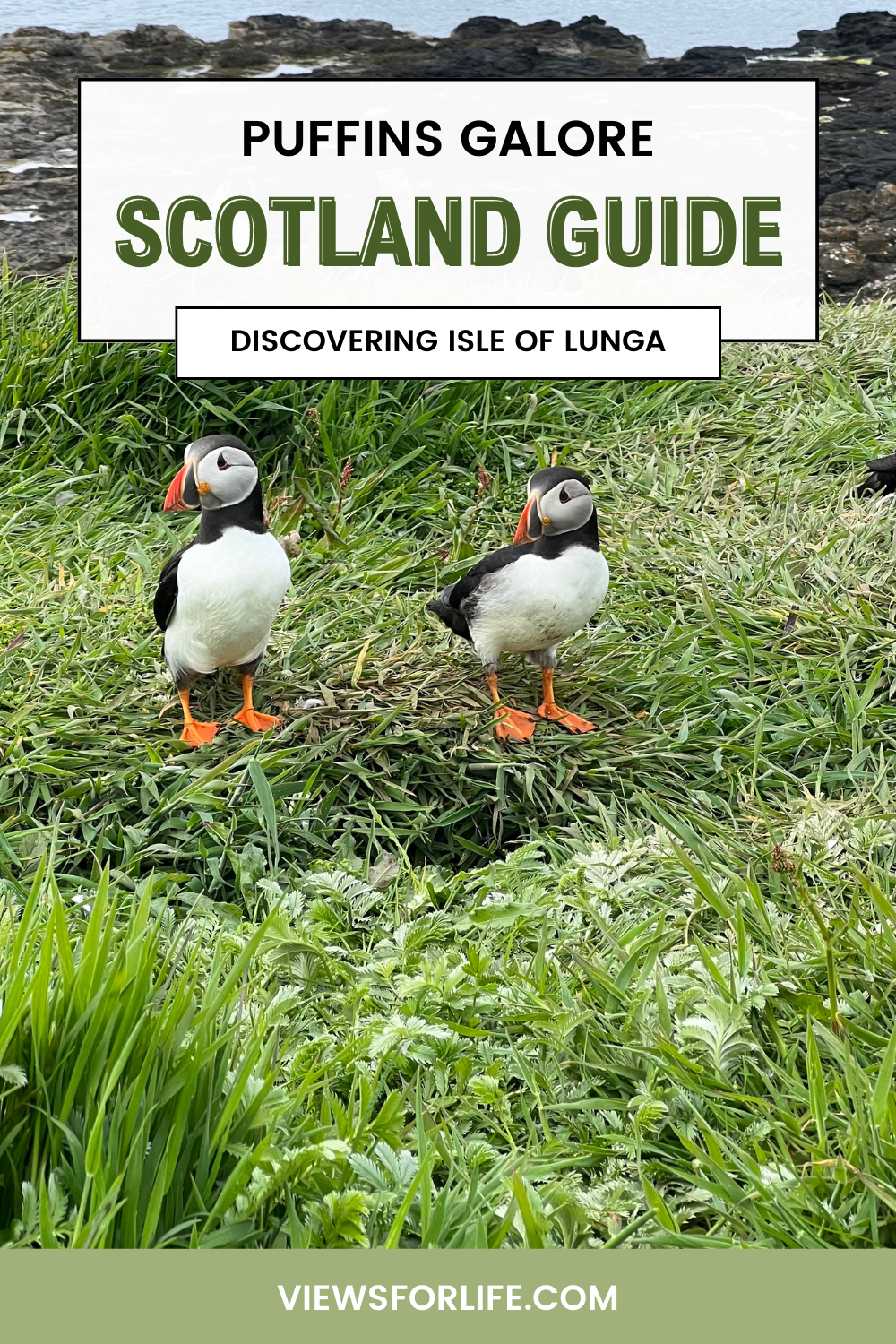
Disclaimer: Some of the links in the article below are affiliate links, and at no additional cost, I earn a commission if you make a purchase. All opinions on my sponsored trip with Detailed Journey are my own.
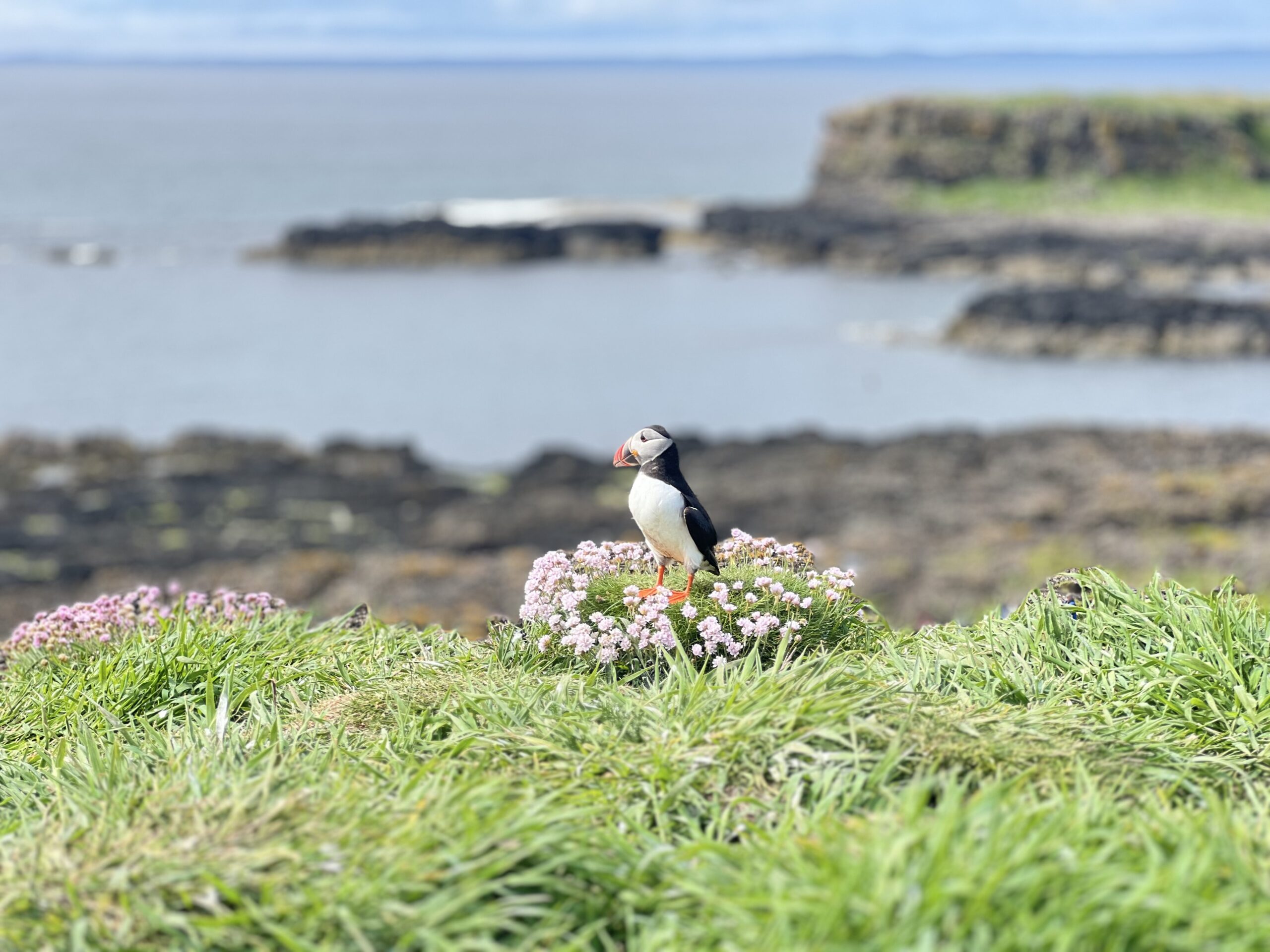
Puffins Galore: Discovering Isle of Lunga’s Bird Sanctuary in Scotland (From Oban)
Overview of the Isle of Lunga
As I embarked on my sponsored trip to the Isle of Lunga, I couldn’t help but be impressed by the island’s rich history and wonderful geographical location. Situated off the west coast of Scotland, Lunga is part of the Treshnish Isles archipelago, renowned for its abundant birdlife and untouched natural beauty.
Lunga is a haven for seabirds, earning its reputation as a bird sanctuary. Its rugged cliffs and coastal habitats provide an ideal breeding ground for various bird species, with puffins being the undisputed stars of the show. The island’s pristine environment and protected status have made it a vital sanctuary for these charming creatures, allowing them to flourish in their natural habitat.
While puffins steal the spotlight, Lunga is also home to various other wildlife species. Keep your eyes peeled for guillemots, razorbills, fulmars, and kittiwakes as they navigate the towering cliffs and soar through the clear skies above. Grey seals can often be spotted lounging on the rocky shores, adding to the island’s diverse wildlife population.
But not just the birds and marine mammals make Lunga a must-visit destination. The island’s untouched landscapes and stunning natural attractions are a feast for the eyes. As you explore the island, be prepared to encounter breathtaking vistas at every turn, providing ample opportunities for awe-inspiring photographs and cherished memories.
Lunga’s remote location and preserved ecosystem make it an idyllic escape from the bustling world. With no permanent human residents, the island offers a unique sense of tranquility and an opportunity to immerse yourself in nature’s wonders. As you wander the rugged paths and soak in the untouched beauty of Lunga, you’ll quickly understand why it’s considered a hidden gem among nature enthusiasts and bird lovers.
My experience on the Isle of Lunga left an indelible mark on my heart. The combination of its rich history, unique bird sanctuary, and remarkable natural beauty make it a destination unlike any other. Whether you’re an avid birdwatcher, a nature photographer, or simply seeking solace in the embrace of the wild, Lunga promises an unforgettable adventure.
In the following sections, I will delve deeper into my journey on the Isle of Lunga, sharing insights and tips on exploring this exceptional bird sanctuary and getting up close and personal with its magnificent inhabitants. Join me as we unravel the secrets of puffins galore and discover the hidden treasures that await on the Isle of Lunga.
🗺 Explore great tours on Viator or Get Your Guide!
Where can you see Puffins in Scotland?
Puffins can be found in several locations across Scotland, particularly along the coastal regions. Here are some popular spots where you can see puffins in Scotland:
Isle of Staffa: Located in the Inner Hebrides, the Isle of Staffa is known for its puffin colonies. The island’s rugged cliffs provide ideal nesting grounds for these adorable birds.
Isle of Lunga: Also part of the Treshnish Isles archipelago, the Isle of Lunga is home to a significant population of puffins. This remote island offers a remarkable bird-watching experience.
Isle of May: Situated in the Firth of Forth, the Isle of May is a haven for seabirds, including puffins. Visitors can witness these charismatic birds nesting and flying around the island.
Handa Island: Located in the far northwest of Scotland, Handa Island is a nature reserve and a breeding ground for puffins. The cliffs and grassy slopes of the island provide an ideal habitat for these birds.
Fowlsheugh Nature Reserve: Situated on the Aberdeenshire coast, Fowlsheugh is a seabird colony where puffins can be spotted. The dramatic cliffs offer excellent vantage points to observe these fascinating creatures.
Fair Isle: This remote island, situated between Orkney and Shetland, is renowned for its diverse birdlife, including puffins. Visitors can enjoy up-close encounters with puffins during the breeding season.
Shetland Islands: Several locations within the Shetland Islands, such as Sumburgh Head and Hermaness Nature Reserve, provide opportunities to see puffins nesting and thriving in their natural habitat.
When’s the best time to see Puffins in Scotland?
The best time to see puffins in each Isle of Scotland can vary slightly, but the breeding season is generally the optimal time for puffin viewing. Here’s a breakdown of the best time to see puffins in each Isle:
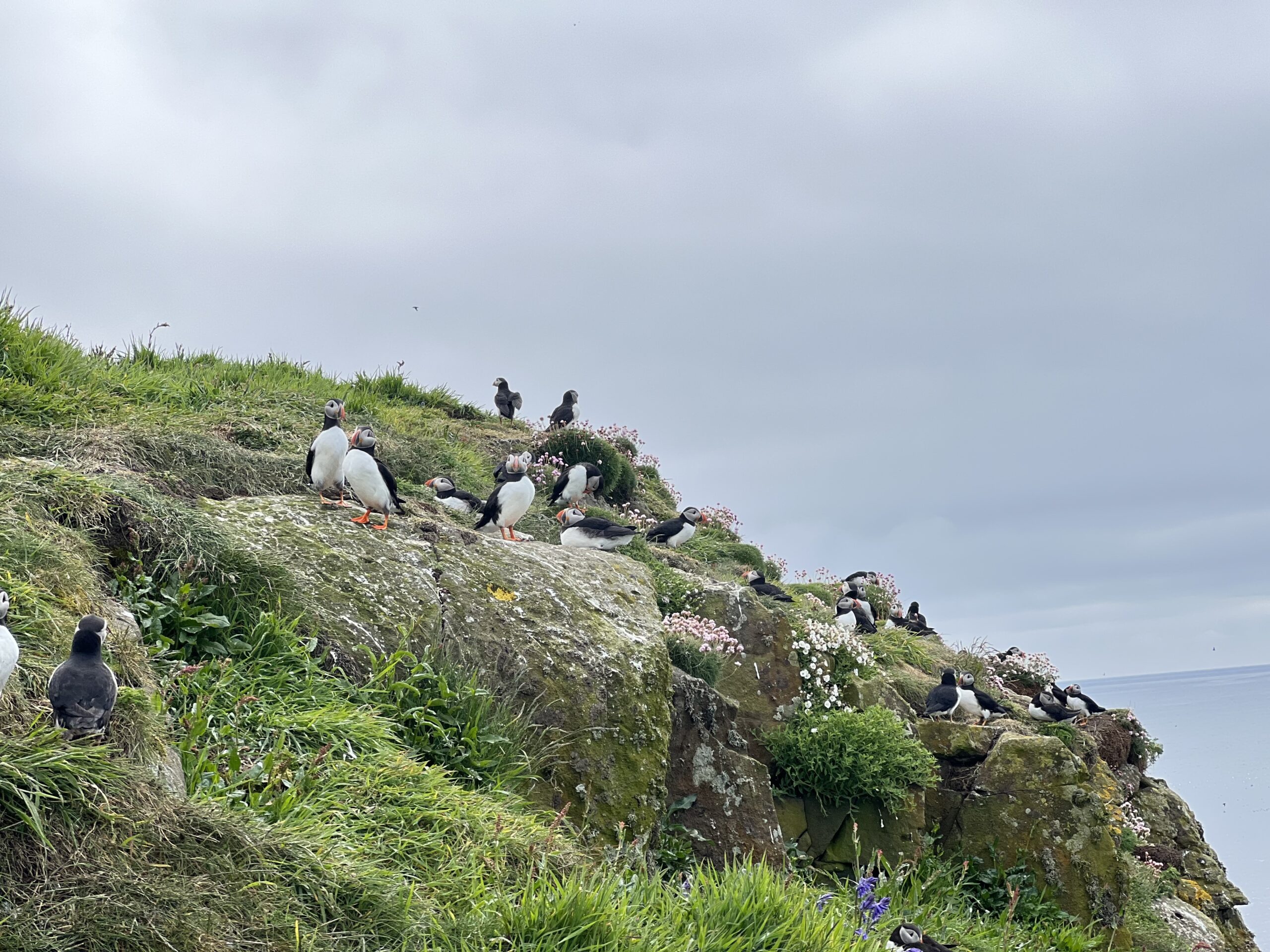
Isle of Staffa: The breeding season for puffins on the Isle of Staffa typically starts in late April and extends until early August. May and June are prime months to witness puffins as they establish their nests and engage in courtship rituals.
Isle of Lunga: The Isle of Lunga, part of the Treshnish Isles archipelago, is known for its thriving puffin colonies. The best time to see puffins on Lunga is from May to early August, with June being particularly popular as it offers the highest puffin activity during the breeding season.
Isle of May: Puffins return to the Isle of May in early April and stay until late July or early August. May and June are often recommended for optimal puffin sightings, as this is when the island’s puffin population is at its peak.
Handa Island: Puffins arrive there in April and stay until late July or early August. May and June are generally the best months to visit Handa Island to observe puffins and their nesting activities.
Fair Isle: Puffins return to Fair Isle in late April and stay until early August. The best time to see puffins on Fair Isle is from May to July, with June being the peak month for puffin activity and chick-rearing.
Shetland Islands: Puffins can be seen in the Shetland Islands from April to August, with the peak months for puffin viewing being May, June, and July. Locations like Sumburgh Head and Hermaness Nature Reserve offer excellent opportunities to observe puffins in their natural habitat.
🗺 Book a great group trip to Scotland with Detailed Journey!
Getting to the Isle of Lunga: A Journey to Avian Paradise
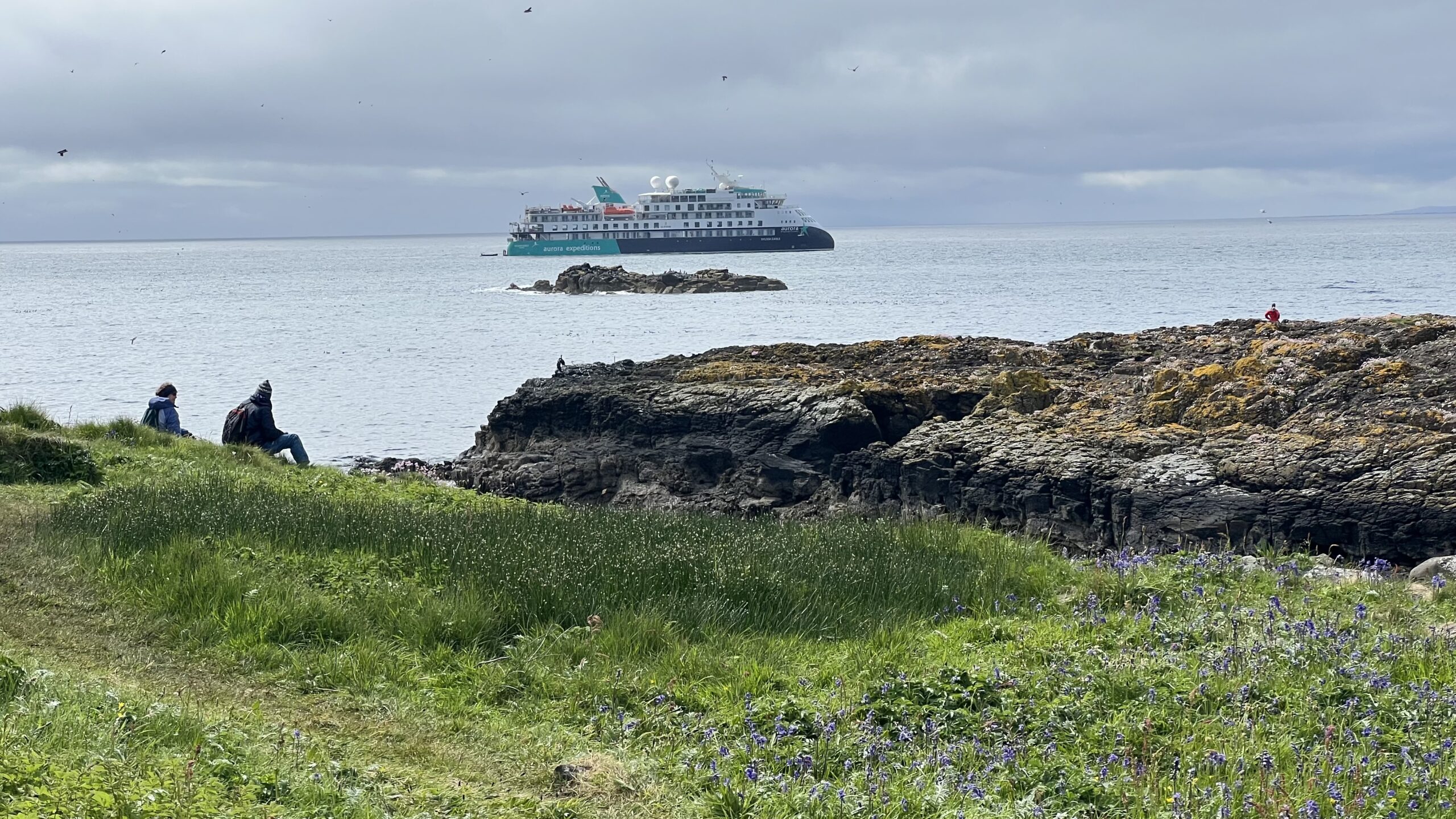
To reach this secluded bird sanctuary, there are a few options, each offering its unique charm and sense of anticipation.
One popular choice is to embark on a scenic ferry ride from the charming coastal town of Oban. I stepped onto the ferry deck, and excitement washed over me. The gentle rocking of the boat, the scent of the sea in the air, and the panoramic views of the rugged Scottish coastline created an atmosphere of wanderlust that set the tone for the upcoming escapade.
Another option is to join a guided tour, which provides transportation, expert insights, and an immersive experience. Guided tours typically depart from various points along the west coast of Scotland, offering a seamless journey to the Isle of Lunga. This was the option for me with Detailed Journey, and I found it to be an excellent way to enhance my understanding of the island’s unique ecosystem and birdlife. The knowledgeable guide shared intriguing anecdotes and pointed out hidden gems along the way, making the trip all the more enriching.
Pro-Tip: I recommend considering key travel tips for a smooth and enjoyable journey to the Isle of Lunga. Firstly, planning your trip is wise, especially during peak seasons when demand is high. Booking your transportation tickets or guided tour early ensures availability and peace of mind.
Regarding departure points, Oban is a convenient starting point due to its proximity to the Isle of Lunga. I recommend arriving in Oban a day before your departure, allowing ample time to explore this delightful coastal town. Oban exudes a welcoming charm that prepares you for the wonders ahead, from its picturesque harbor to its quaint streets lined with traditional Scottish shops and eateries.
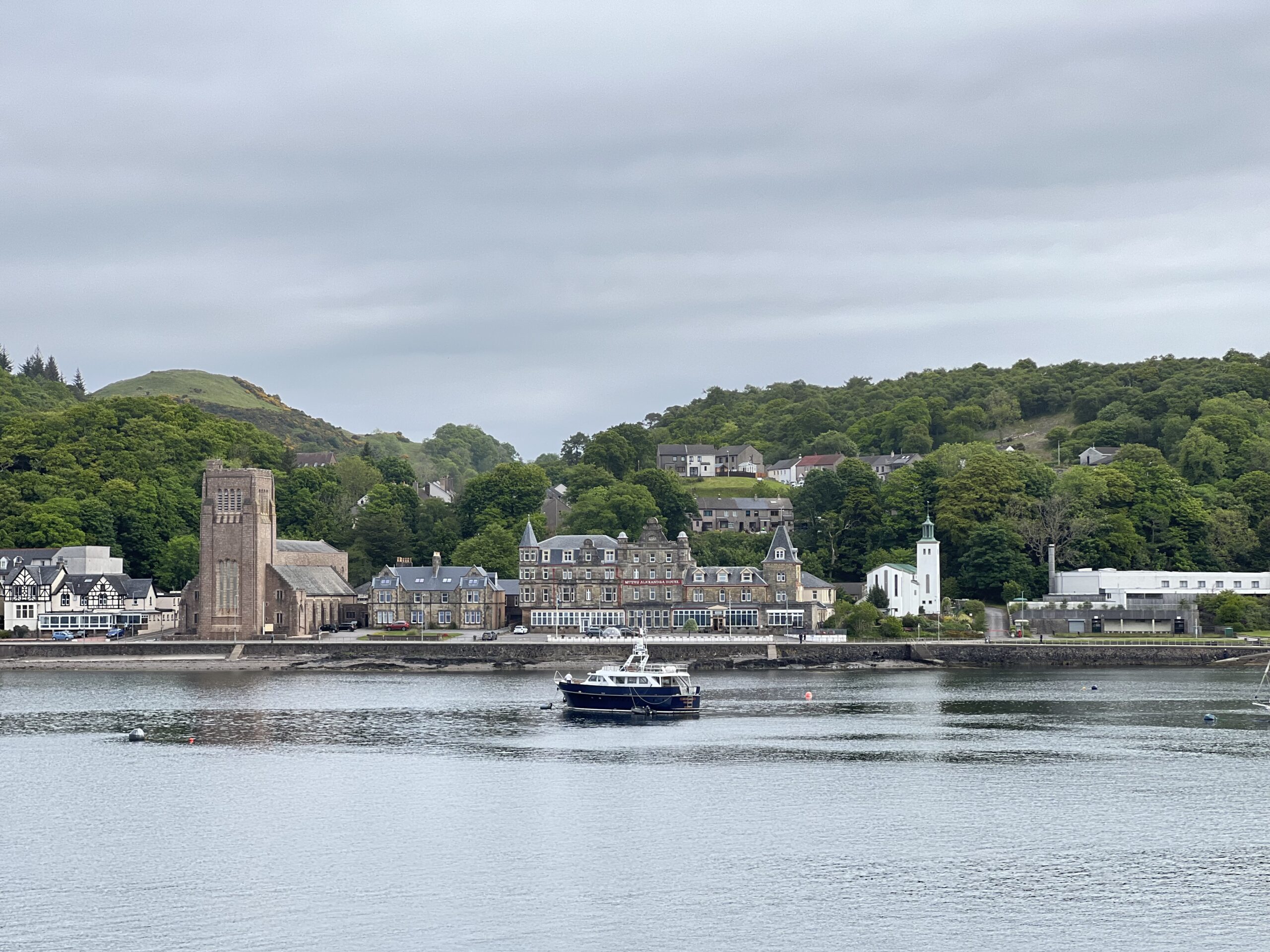
When choosing a departure time, keep in mind the weather conditions. The unpredictable Scottish climate can affect the Isle of Lunga, and adverse weather may impact travel plans. Staying updated with weather forecasts and communicating with the ferry or tour operators will help you make informed decisions and potentially adjust your itinerary to ensure the best experience.
As you pack for your journey, consider bringing essential items such as comfortable walking shoes or boots, as exploring the island may involve traversing uneven terrain. Layered clothing is also recommended, as the weather can change throughout the day. And don’t forget your camera or smartphone to capture the awe-inspiring moments you’ll encounter on the Isle of Lunga.
My voyage to the Isle of Lunga was an unforgettable experience from start to finish. As the ferry departed from Oban, I couldn’t help but feel a sense of anticipation building within me. The Scottish coastline gradually transformed into a breathtaking panorama of natural wonders, with the Isle of Lunga as a beacon of untamed beauty on the horizon.
Exploring the Isle of Lunga: A Puffin Paradise Unveiled
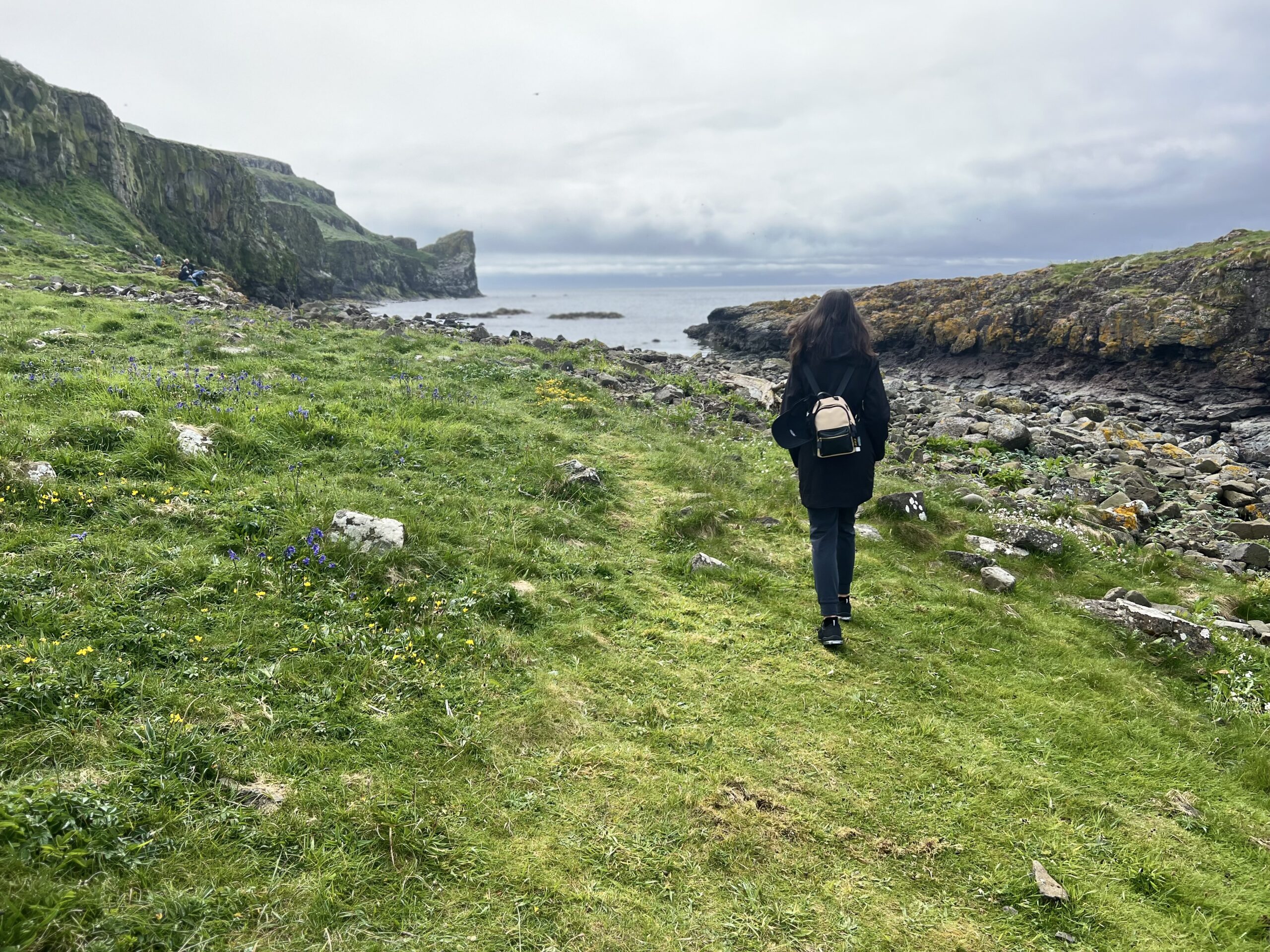
As I stepped off the boat and onto the Isle of Lunga, I instantly saw the untouched beauty surrounding me. The island’s rugged cliffs rose majestically from the emerald sea, creating a dramatic backdrop for the incredible avian spectacle that awaited. The air was filled with the unmistakable calls of seabirds, including the endearing chattering of puffins. It was a sensory overload, and I couldn’t wait to explore this puffin paradise.
The Isle of Lunga offers two options for discovering its natural wonders: guided tours and self-guided exploration. We were in a group but opted for a self-guided tour. The self-guided exploration also has its appeal. It allows for a more flexible and spontaneous experience, where you can choose your path and spend as much time as you desire to observe the puffins and other bird species. It lets you soak in the island’s tranquil atmosphere at your own pace. Remember to adhere to any guidelines and respect the wildlife and their habitats while exploring independently.
Aside from puffins, the Isle of Lunga is teeming with other bird species, creating a symphony of avian life. Fulmars glide gracefully above the cliffs, their wings catching the ocean breeze. Guillemots form impressive colonies, adding their distinct markings to the vibrant tapestry of the island. Elegant razorbills perch on rocky ledges, providing a delightful spectacle.
The Isle of Lunga offers abundant opportunities for wildlife observation and photography. As I ventured along the island’s pathways, I found myself near the puffins and other birds. It was a photographer’s paradise, with countless moments begging to be captured. I could hardly contain my excitement as I tried to immortalize the puffins’ adorable antics and their colorful surroundings. The key to successful wildlife photography on Lunga is patience and a keen eye for capturing those candid moments that truly reflect the essence of these charismatic creatures.
Whether you’re an avid birdwatcher, a passionate photographer, or a nature lover, the Isle of Lunga promises an unforgettable encounter with Scotland’s captivating wildlife.
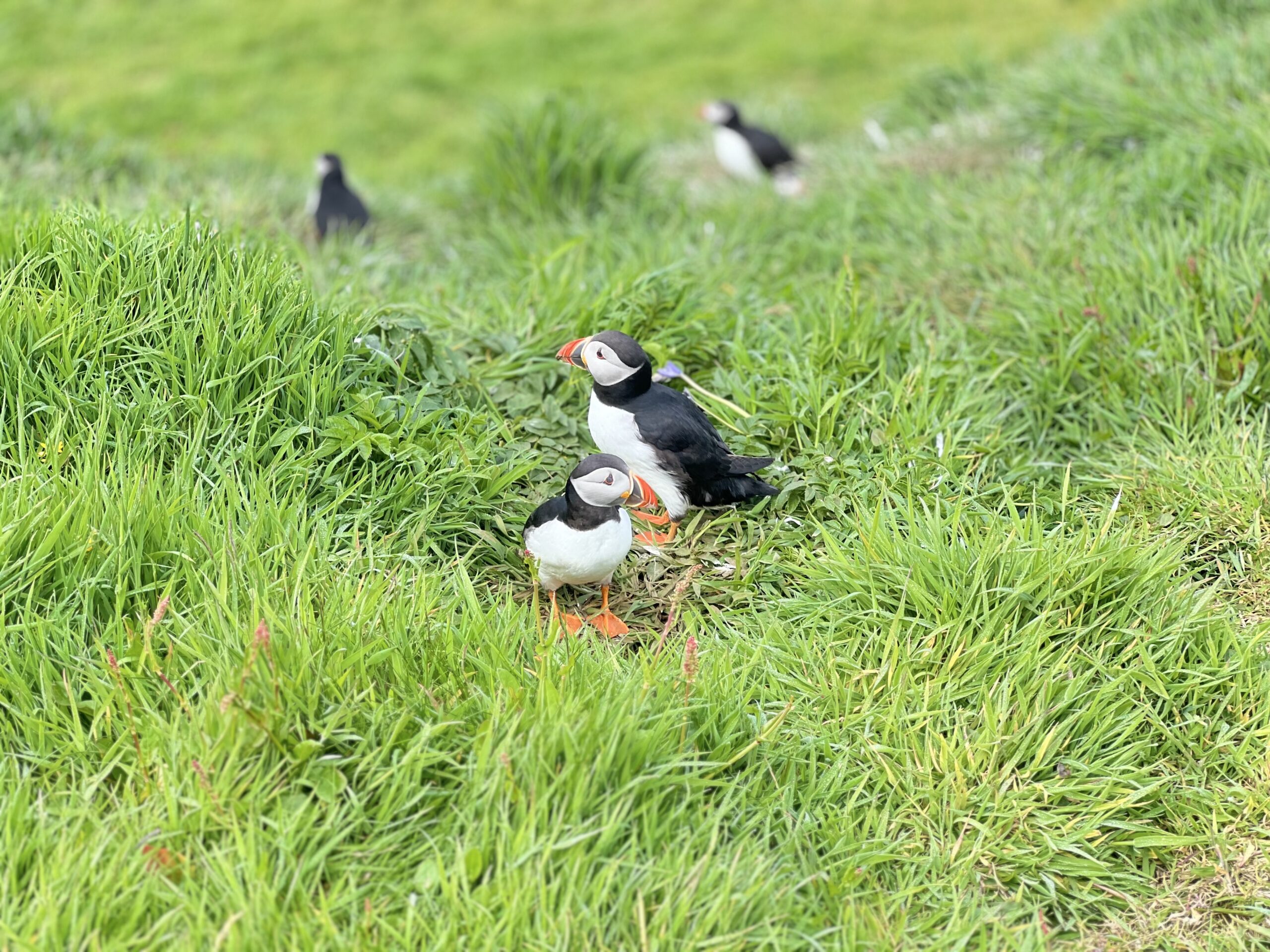
Puffin Watching on the Isle of Lunga: A Delightful Encounter with Scotland’s Coastal Icons
As I gazed at the puffins on the Isle of Lunga for the first time, their distinct appearance left me in awe. Their black and white bodies contrasted against the brilliant hues of their beaks, which seemed to glow like a burst of color against the backdrop of the rugged cliffs. These charming birds have a certain magnetism that draws you into their world.
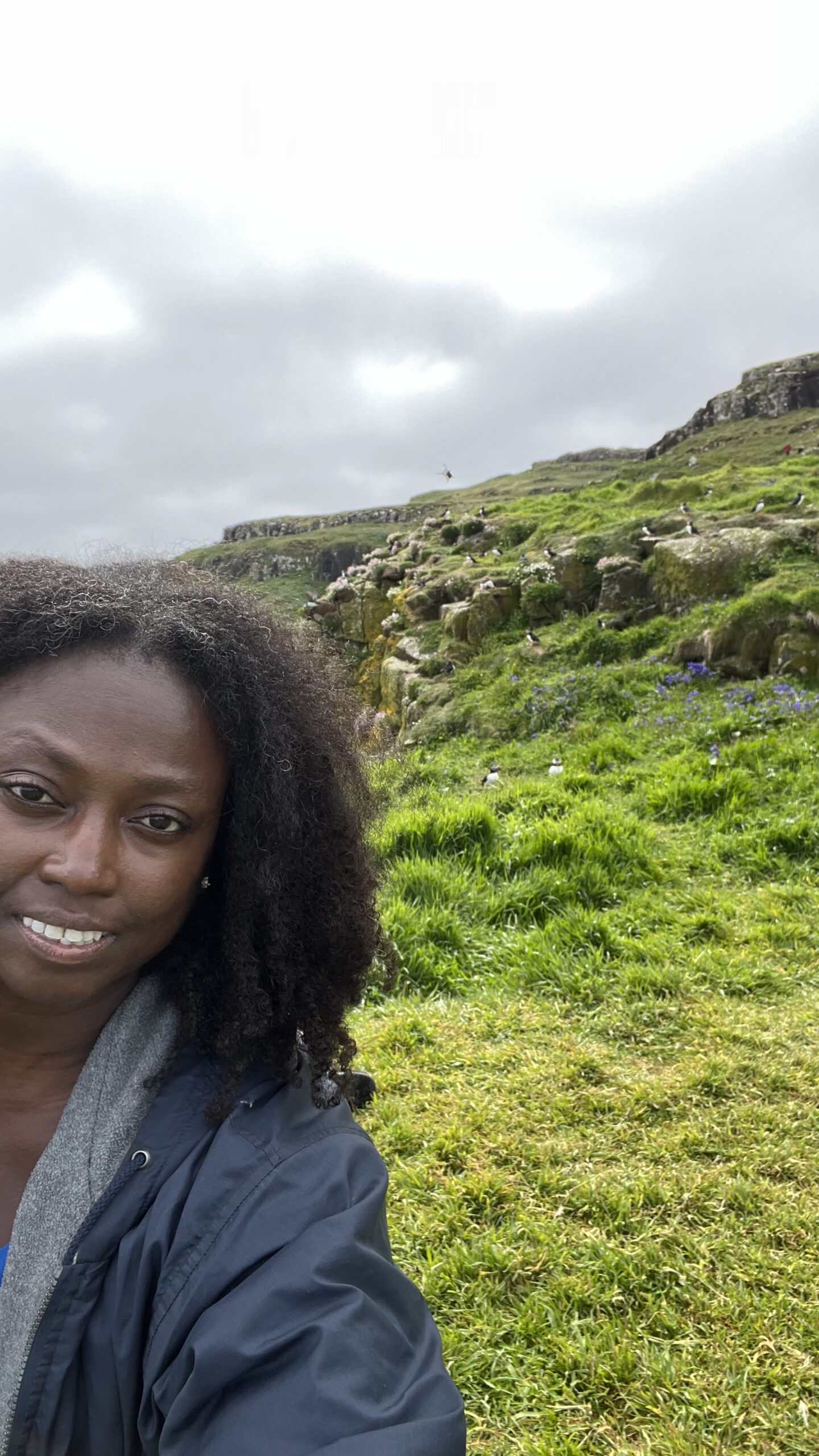
Observing puffins’ behavior and nesting habits was a privilege during my visit to the Isle of Lunga. These charismatic birds have a well-choreographed routine, with their distinctive waddle and comical flapping wings as they navigate the cliffs. I was fascinated to learn that puffins are burrow nesters, creating intricate tunnels in the grassy slopes to rear their young. Witnessing their dedication to their offspring, as they took turns incubating the eggs and providing nourishment, was heartwarming.
To witness puffins in their natural habitat, the Isle of Lunga offers several prime locations that guarantee incredible sightings. The eastern cliffs provide panoramic views of puffin colonies perched on rocky ledges, their constant comings and goings adding a sense of animation to the landscape. For a closer encounter, the grassy slopes near the cliffs offer opportunities to see puffins up close as they venture out from their burrows or return with food for their chicks.
May to July are the best times to observe puffins during the breeding season, as they are most active and visible.
Being a responsible and respectful visitor is essential when engaging in puffin watching. Here are some tips to ensure a positive experience for both you and the puffins:
- Maintain a safe distance: While puffins may appear approachable, keep a respectful distance to avoid causing them stress or disturbance. Admire their beauty from a distance and use binoculars or zoom lenses for a closer look.
- Stay on designated paths: Stick to selected pathways to minimize habitat disruption and prevent accidental damage to burrows or nesting areas.
- Avoid sudden movements or loud noises: Puffins are sensitive to disturbances, so they move slowly and avoid making loud noises that could startle them or disrupt their natural behavior.
- Observe without interference: Refrain from touching or feeding the puffins, which can disrupt their natural behavior and potentially harm their health.
- Respect nesting areas: Puffins rely on their burrows for nesting and rearing their young. Avoid stepping on or around these areas to ensure their safety and minimize the risk of disturbance.
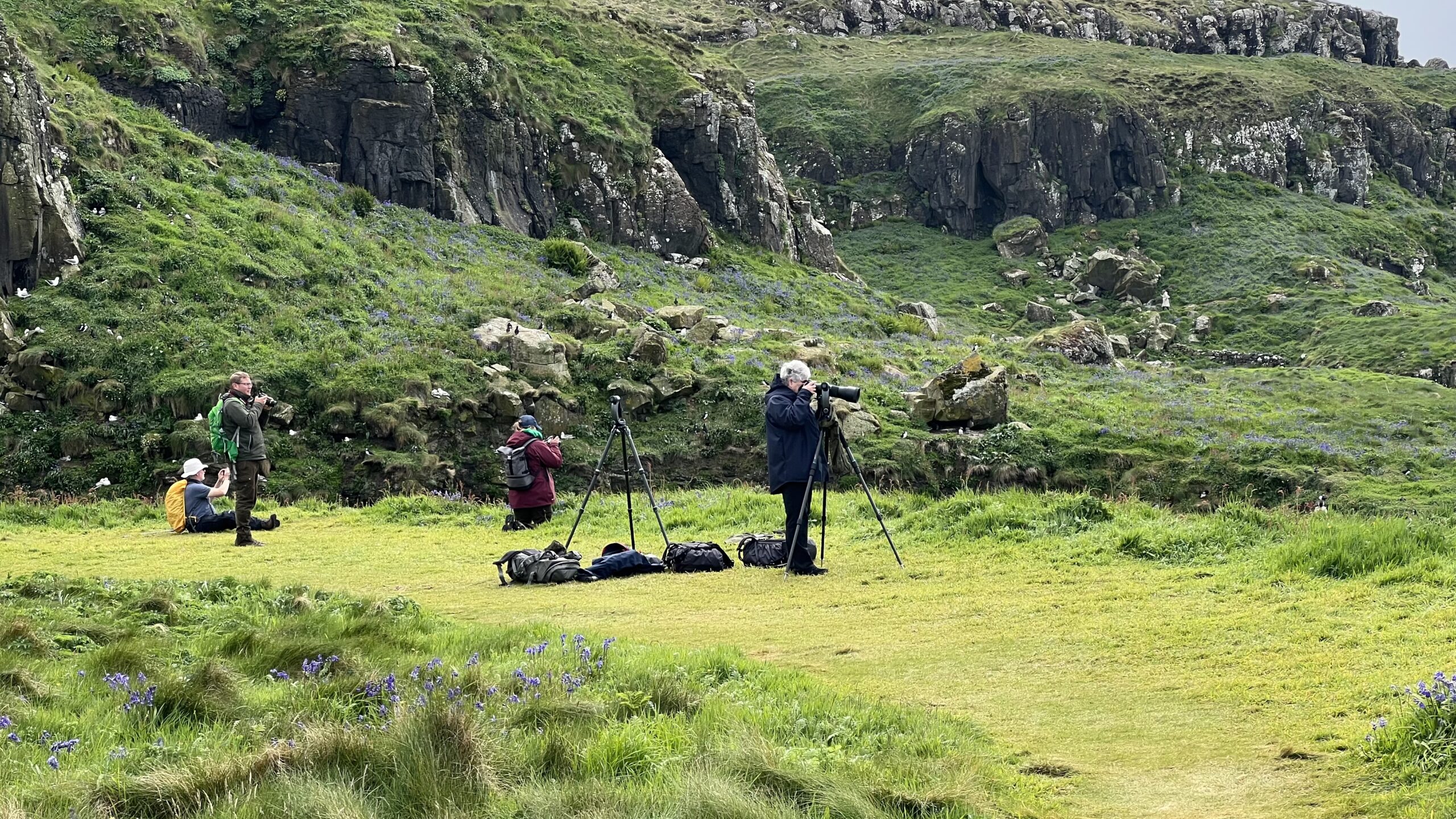
Capturing the Beauty of Puffins: Photography Tips to Preserve Timeless Moments
As a passionate photographer, I was determined to capture the captivating beauty of puffins during my sponsored trip to the Isle of Lunga. To ensure the best possible outcome, having the right equipment is crucial. For photographing these charismatic birds, here are some recommendations:
- A DSLR or Mirrorless Camera: These systems provide flexibility in lens selection and manual control, allowing you to capture intricate details and achieve desired compositions.
- Zoom Lens: A telephoto zoom lens in the 200-400mm range is ideal for photographing puffins. It provides the necessary reach to capture them from a distance while maintaining sharpness and clarity.
- Tripod or Monopod: Stability is essential for getting crisp images, especially when shooting in challenging lighting conditions or using longer focal lengths. Consider using a tripod or monopod to minimize camera shake and achieve sharper results.
Timing is everything when it comes to puffin photography. The best times of day for capturing stunning puffin shots are during the golden hours of sunrise and sunset. The soft, warm light during these periods adds a magical touch to your images, enhancing the colors and textures. Additionally, photographing puffins during the breeding season, which typically occurs from April to August, offers an abundance of interesting behaviors and interactions to document.
Patience and respect are key to getting close to puffins and capturing their unique behaviors. Puffins are naturally curious but easily startled. Here are some techniques to help you get closer to these adorable birds:
- Use camouflage and blend in with the surroundings: Wear neutral-colored clothing or camouflage gear to blend into the environment, making yourself less noticeable to the puffins.
- Move slowly and avoid sudden movements: Approach puffins gradually and slowly. Sudden movements can startle them and cause them to fly away.
- Observe from a low angle: Puffins spend much time on the ground or near their burrows. By getting to their eye level, you can capture more intimate and engaging shots.
- Allow puffins to approach you: Find a comfortable spot and be patient. Puffins may approach you out of curiosity, providing incredible close-up opportunities.
Preserving the Future of Puffins: Advocating for Conservation on the Isle of Lunga
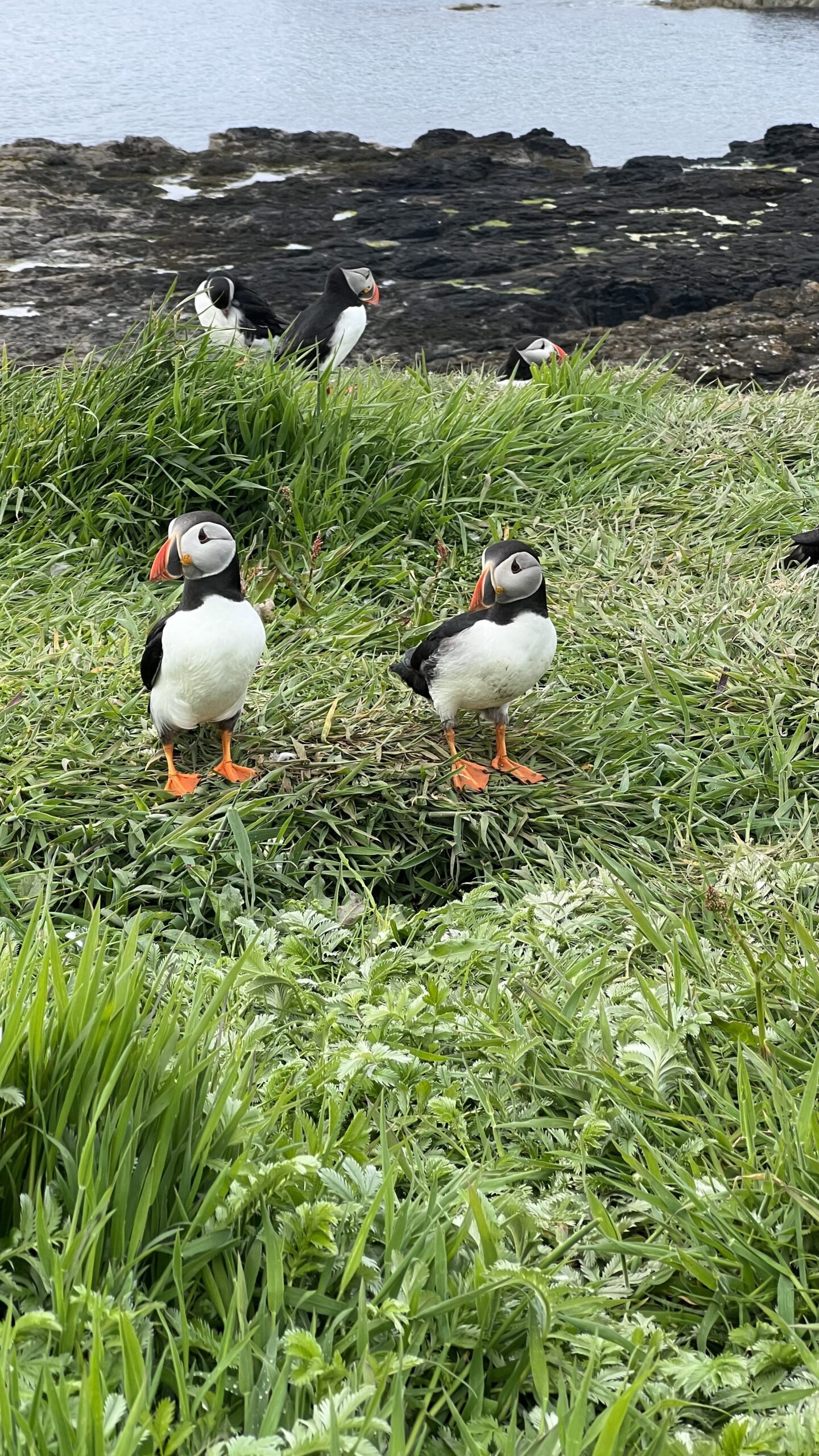
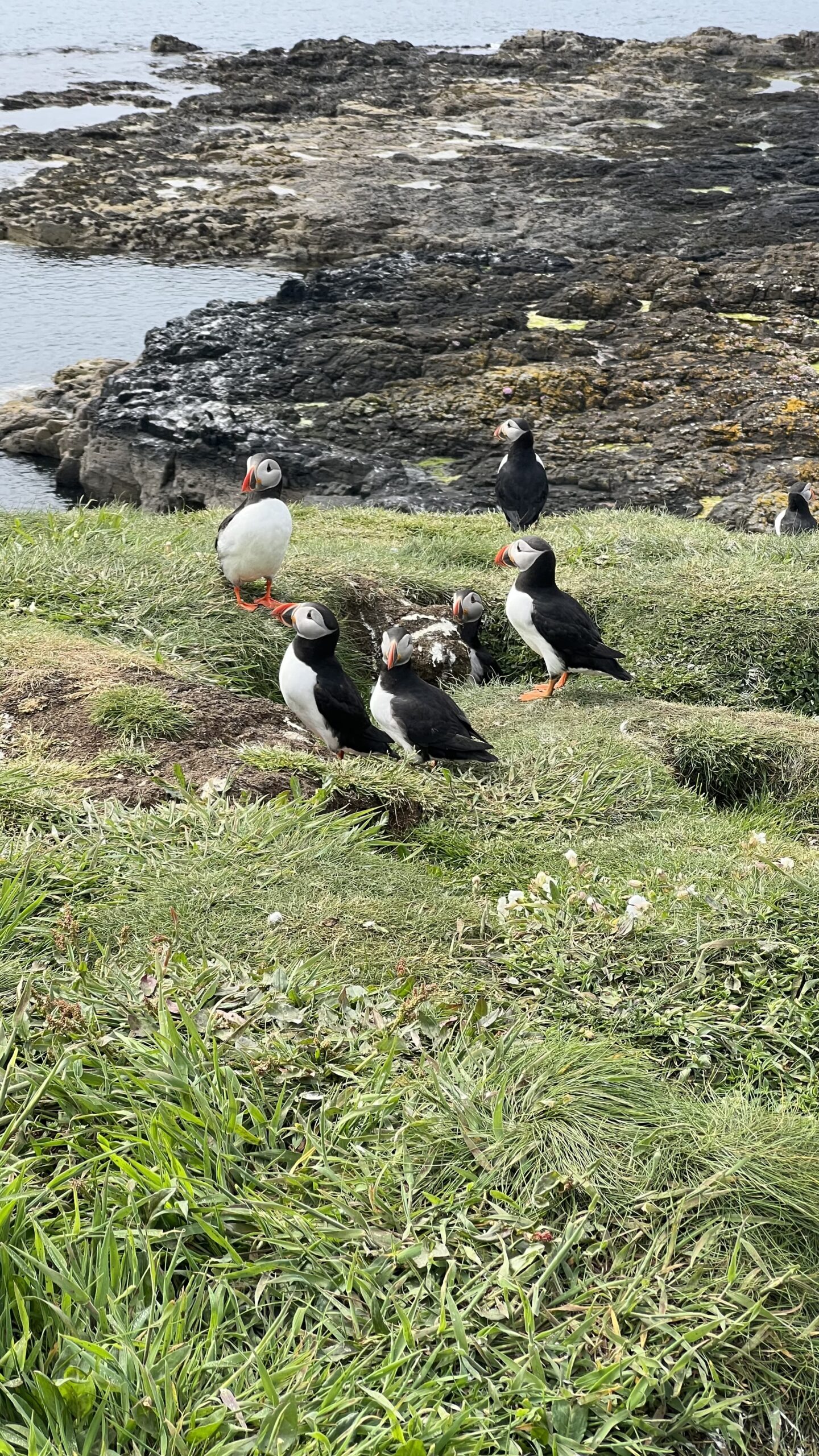
During my recent sponsored trip to the Isle of Lunga, I witnessed firsthand the challenges that puffins and other seabirds face in their fragile coastal habitats. Understanding these challenges is essential in raising awareness and taking action to protect these beloved creatures. Puffins, like many seabirds, are confronted with a range of threats, including:
- Climate Change: Rising sea levels, changing ocean temperatures, and unpredictable weather patterns impact the availability and distribution of the fish that puffins rely on for sustenance.
- Habitat Degradation: Coastal development, pollution, and invasive species can disrupt puffins’ nesting sites and foraging grounds, threatening their breeding success and survival.
- Overfishing: Unsustainable fishing practices can deplete fish stocks, reducing the food supply for puffins and other seabirds.
Fortunately, numerous conservation initiatives and organizations work tirelessly to protect puffins and their habitats. One such organization on the Isle of Lunga is the Lunga National Nature Reserve. Their dedicated team conducts research, monitors puffin populations, and implements conservation strategies to safeguard the island’s unique bird sanctuary.
The Royal Society for the Protection of Birds (RSPB) also protects puffins and other seabirds throughout Scotland. Their efforts include habitat restoration, advocating for responsible fishing practices, and raising awareness among the public.
Visitors to the Isle of Lunga can actively contribute to preserving puffin habitats and supporting their conservation. Here are a few ways to make a positive impact:
- Respect the Environment: Follow designated paths and avoid trampling on sensitive vegetation or puffin burrows. Be mindful of your actions to minimize disturbance and prevent damage to their habitats.
- Responsible Waste Disposal: Dispose of your trash properly and avoid leaving any litter behind. Marine debris threatens seabirds, including puffins, as they may mistake it for food or become entangled.
- Support Conservation Organizations: Consider donating to local conservation organizations such as the Lunga National Nature Reserve or the RSPB. Your contributions can directly fund crucial research, conservation efforts, and educational programs.
- Spread Awareness: Share your experiences and knowledge about puffins and their conservation with others. Through social media, blog posts, or personal conversations, you can raise awareness and inspire others to protect these magnificent birds.
FAQs for Puffins on Isle of Lunga in Scotland
When is the best time to see puffins on the Isle of Lunga?
Puffins typically arrive on the Isle of Lunga in late April and depart by early August. The peak season for puffin sightings is usually in May and June when they are most active.
How do I get to the Isle of Lunga?
The Isle of Lunga is part of the Treshnish Isles, located off the west coast of Scotland. Visitors can reach the island by taking a boat tour from various nearby ports, such as Oban or Fionnphort on the Isle of Mull.
Are there guided tours available for puffin watching?
Yes, there are several tour operators that offer guided boat trips to the Isle of Lunga specifically for puffin watching. These tours often include expert commentary on the wildlife and ecosystems of the area.
What should I bring for my trip to see the puffins?
It’s recommended to dress in warm, waterproof layers, as the weather on the Isle of Lunga can be unpredictable. Binoculars or a camera with a good zoom lens are also handy for observing puffins from a distance.
Can I get close to the puffins for photographs?
While visitors can often get relatively close to puffins on the Isle of Lunga, it’s important to respect their natural habitat and avoid causing disturbance. Keep a respectful distance and refrain from making sudden movements or loud noises.
What other wildlife can I expect to see on the Isle of Lunga?
In addition to puffins, the Isle of Lunga is home to a variety of seabirds, including razorbills, guillemots, and fulmars. Visitors may also spot seals, dolphins, and occasionally whales in the surrounding waters.
Are there any restrictions or rules I need to follow while visiting the Isle of Lunga?
Yes, visitors are asked to follow the Scottish Outdoor Access Code, which includes guidelines for respecting wildlife and the environment. Additionally, dogs are not allowed on the Isle of Lunga to protect the nesting seabirds.
Can I bring food or drinks to the Isle of Lunga?
It’s best to avoid bringing food or drinks to the island to minimize litter and avoid attracting scavenging birds. Most boat tours provide refreshments onboard.
Are there restroom facilities on the Isle of Lunga?
No, there are no restroom facilities on the island itself. Visitors should plan accordingly before departing on their boat tour.
What happens if the weather is bad on the day of my trip?
Boat trips to the Isle of Lunga are weather-dependent, and tours may be canceled or rescheduled in the event of adverse conditions. It’s recommended to check with your tour operator for updates and alternative arrangements.
Pin This ⤵
Leave a Reply
© copyright 2024 Congologie Studios